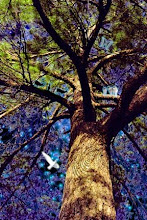Kanuchi is considered to be a real delicacy. The nuts are gathered in the fall and allowed to dry for a few weeks before the kanuchi making begins. It is a simple process, but that does not necessarily mean that is easy. The hickory nuts are cracked and the largest pieces of shell removed either by shaking the pieces through a loosely woven basket, or picking them out by hand.
Traditionally, a log was hollowed out on one end into a bowl like shape. The shelled hickory nuts are placed in the hollowed log and pounded with a long heavy stick with the end rounded to have the same contour, more or less, as the cavity in the log. The nuts are pounded until they are of a consistency that can be formed into a ball that will hold its shape. Kanuchi balls are usually about three inches in diameter and must be stored in a cold place. Today kanuchi is usually preserved by freezing.
To prepare kanuchi for the table, place a kanuchi ball in a saucepan with about a quart of water and bring it to a boil to dissolve the ball. Allow the kanuchi to simmer about ten minutes and then poor it through a fine sieve. (A colander lined with cheese cloth works very well for this.) All the remaining shells are left in the sieve. If you have the time and patience you can pick the larger bits of nut meat from the shells in the sieve and add them to the liquid kanuchi. The kanuchi should be about as thick as light cream. Most traditional cooks will add about two cups of homemade hominy to a quart of kanuchi. Some cooks prefer hominy grits, which are prepared according to package directions and added to the kanuchi. Others add cooked rice. Such things as consistency and how much hominy or hominy grits to add are, of course a matter of taste, as is the addition of salt or sugar.
Serve kanuchi hot as soup.
The John Howard Payne papers, a document from 1835 where elders were interviewed for their knowledge, states that a thick drink was made from hickory nuts which had been pounded, but it was made with cold water and allowed to thicken without the addition of hominy or rice.
Info provided by various sources.




